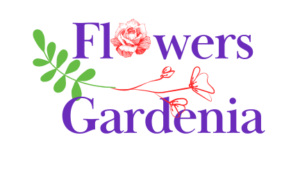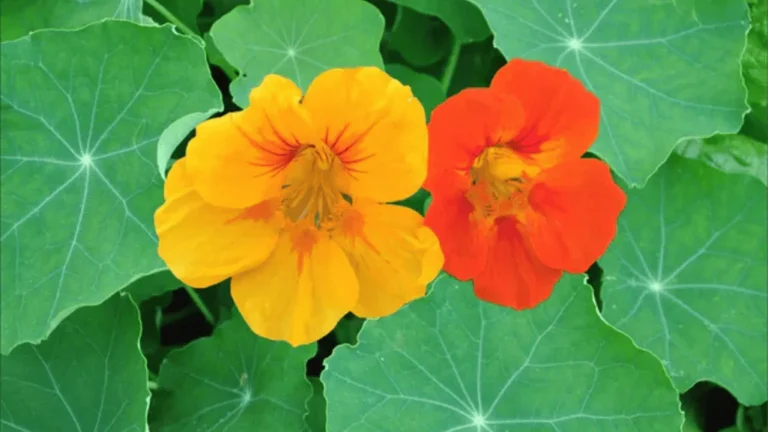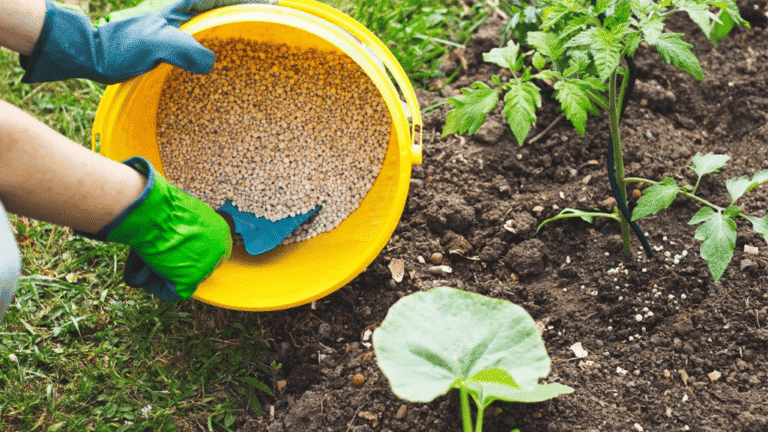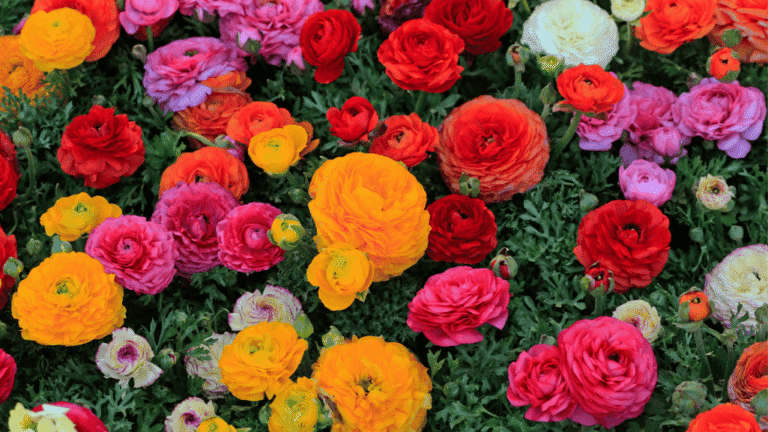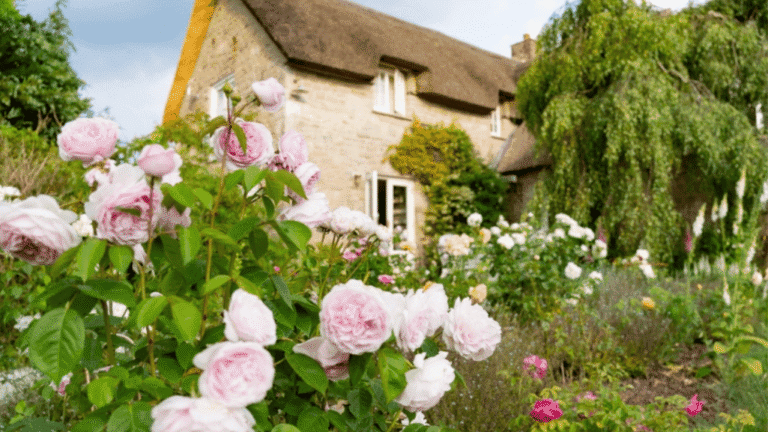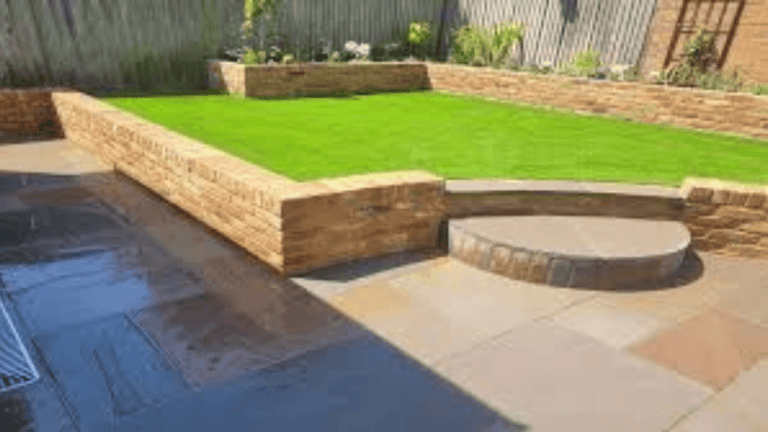Beautiful flowers gardenia Plants For Your homes

A fence raised garden is a great choice for those with little space or tough soil. It lets you grow more with less effort. Raised beds and fences keep pests away and define your garden.
Frame It All has many garden solutions, like 8′ x 8′, 10′ x 10′, and 12′ x 12′ beds. Their Stack & Extend Animal Barrier is a nice look and works well. You can pick from different shapes like three-sided, Roundabout, and Center Cross beds.
Plan your raised beds well to use space wisely. Add containers to get more from small areas. When picking fencing, think about wood, composite, metal, or vinyl. Fences should be 2-3 feet tall for most gardens. For bigger animals, like deer, go up to 8 feet.
Key Takeaways
- Fence raised gardens are an effective way to grow more in limited space
- Elevated planting beds offer improved soil quality and easier maintenance
- Garden enclosures protect plants from pests and animals
- Careful planning and vertical gardening techniques maximize yields
- Choose appropriate fencing materials and heights based on your needs
Benefits of Raised Bed Gardening
Raised bed gardening is a great choice over traditional gardening. It lets you control the growing environment for your plants. This makes it easier to create the best conditions for them to grow.
Improved Soil Quality
One big plus of raised bed gardening is making the perfect soil mix. You can fill the beds with topsoil, compost, and other nutrients. This ensures your plants get what they need to grow well.
This is especially good in areas with bad soil or contamination. With raised beds, you can make the soil just right for your plants.
A study found that adding compost and fertilizer to raised beds improves soil quality. This targeted approach helps plants grow healthier and stronger. Raised beds can even increase yields by up to 30% compared to traditional gardening.
Better Drainage and Aeration
Raised beds are great for drainage and aeration. This is key for plant health. The soil drains well, preventing waterlogging and root rot.
This is especially good for areas with heavy clay soils or poor drainage. The soil structure in raised beds also lets air reach the roots. This promotes healthy root growth and reduces disease risk.
A well-designed raised bed system can solve problems with both waterlogged and dry soils. The better drainage and aeration help roots thrive. When planning your raised bed garden, use materials like gravel or sand for drainage.
Easier Weed Control
Weed control can be a big challenge in gardening. But raised beds make it easier. The elevated beds make it harder for weeds to grow.
Planting close together in raised beds also helps keep weeds out. This means you can enjoy your garden more and spend less time fighting weeds.
Studies show that planting crops close together in raised beds suppresses weeds. Mulching pathways between beds also stops weeds from germinating. This lets plants get more nutrients and water, leading to healthier growth and higher yields.
While raised beds reduce weed pressure, they might not get rid of all weeds. For tough weeds like Bermuda grass, you might need extra steps like using landscape fabric or targeted weed control.
| Benefit | Description |
|---|---|
| Improved Soil Quality | Create the perfect soil mix for your plants |
| Better Drainage and Aeration | Elevate soil to prevent waterlogging and promote root health |
| Easier Weed Control | Reduced weed pressure and easier management |
In conclusion, raised bed gardening offers many benefits. It improves soil quality, drainage, and weed control. These systems create an ideal environment for plants to thrive. By using raised beds, you can make gardening more productive, efficient, and enjoyable.
Planning Your Fence Raised Garden
Starting a fence raised garden needs careful planning for a good harvest. You must pick the right spot and figure out the best size and shape for your garden bed enclosures.
Choosing the Right Location
Finding the perfect spot for your garden wall beds is key for plant health. Look for a place with lots of sunlight, 6-8 hours a day. This helps plants grow well.
Also, think about how close it is to water, how easy it is to get to, and if it’s safe from strong winds or other bad weather.
Determining the Optimal Size and Shape
Size and shape matter a lot in your garden design. Raised beds should be 3-4 feet wide for easy access. The length depends on how much space you have and what you want to grow.
Think about the plants you want and how much room they need. This helps you pick the right size for your garden.
| Raised Bed Dimensions | Suitable Crops |
|---|---|
| 6 x 3 feet | Leafy greens, herbs, small root vegetables |
| 8 x 4 feet | Tomatoes, peppers, eggplants, cucumbers |
Rectangular or square beds are common and work well. But, you can also try L-shaped or U-shaped beds. They use space better and look nice.
A well-planned fence raised garden is the foundation for a thriving and productive growing season.
By thinking about location, size, and shape, you’re ready for a great gardening season. Next, we’ll talk about building your garden and what materials you’ll need.
Building Your Fence Raised Garden
Building a fence raised garden is a great way to use your space better. It keeps pests and animals away. With the right materials and tools, you can make a strong and pretty garden fencing system that lasts for years.
Materials and Tools Required
First, get all the materials and tools you need. For wood beds, use rot-resistant lumber like cedar or redwood. Metal beds need galvanized steel or aluminum sheets. You can also buy pre-made kits that have everything you need.
Here are the tools you’ll need:
- Saw (hand saw or circular saw)
- Drill
- Hammer
- Measuring tape
- Level
- Shovel
- Work gloves
Step-by-Step Construction Guide
- Find a flat spot in your yard that gets at least 6 hours of sunlight a day.
- Measure and mark the size of your beds. Sizes like 8′ x 8′, 10′ x 10′, and 12′ x 12′ are common.
- Cut the lumber or metal to the right size.
- Build the frames of your beds using screws or brackets. Make sure they are square and level.
- Attach the fencing material to the frames. Make sure it’s tight and secure. Use mesh barriers that are tall enough to keep animals out.
- Put organic scraps like twigs and leaves at the bottom of each bed. Then add high-quality organic raised bed soil on top.
- Plant your favorite vegetables, herbs, and flowers in the beds. Follow companion planting to help them grow well.
Think about how much space you have and what plants you want to grow. Raised beds for fence gardens are usually 3′ x 5′ with a 5-foot tall fence.
| Bed Size | Fence Height | Soil Required |
|---|---|---|
| 8′ x 8′ | 5 feet | 21 cubic feet |
| 10′ x 10′ | 5 feet | 33 cubic feet |
| 12′ x 12′ | 5 feet | 48 cubic feet |
For a custom option, Frame It All has modular raised garden bed kits. Their Design It All 3D Tool and Plant, Friends and Enemies resources help you set up your garden.
With careful planning and execution, your fence raised garden will become a thriving oasis of fresh produce and beautiful blooms.
Choosing the Right Soil for Your Raised Beds
When you’re gardening with limited space, your soil quality is key. The best soil for raised beds is rich in nutrients, drains well, and isn’t too heavy. Mix high-quality compost, like mushroom compost, with your soil. Make sure the soil doesn’t clump when you squeeze it.
A study showed Mel’s Mix gave 7 lbs of Roma tomatoes per plant. The Perfect Soil Recipe got 5.3 lbs per plant. Bagged Soil Mix got the least, at 1.34 lbs per plant. These results show how important the right soil mix is for your garden’s health and yield.
| Soil Mix | Roma Tomato Yield (lbs/plant) | Soil pH |
|---|---|---|
| Mel’s Mix | 7.0 | 5.6 |
| Perfect Soil Recipe | 5.3 | 6.8 |
| Bagged Soil Mix | 1.34 | 7.5 |
For your raised bed soil mix, aim for 50-60% topsoil and 40-50% compost. This mix balances nutrients, drainage, and aeration well. Remember, different plants need different soil depths. Leafy greens and herbs need 6 inches, while tomatoes and carrots need 12-18 inches.
Adding organic matter like leaf mold to your soil boosts microbial life and keeps moisture in. This helps your plants stay healthy and strong.
To keep your raised bed soil fertile, fertilize regularly with organic liquid fertilizers. This gives your plants the nutrients they need to grow well, even in small spaces. By making the right soil mix, you’ll get plenty of harvests and healthy plants in your garden.
Selecting Plants for Your Fence Raised Garden
Choosing the right plants for your fence raised garden is key. You need to think about what grows well in raised beds. This includes soil quality, drainage, and how plants fit together.
Using companion planting can also help. It makes the most of your space, keeps pests away, and helps plants grow better.
Experts at Creative Vegetable Gardener say planning is essential. They talk about garden size, light, and how plants work together. This helps your garden thrive.
Vegetables and Herbs That Thrive in Raised Beds
For your raised bed garden, pick plants that do well in tight spaces and good soil. Some great choices are:
- Leafy greens: Lettuce, spinach, kale, and Swiss chard
- Root vegetables: Radishes, carrots, beets, and turnips
- Herbs: Basil, cilantro, parsley, and chives
- Compact vegetables: Bush varieties of tomatoes, peppers, and eggplants
These plants have shallow roots and can grow close together. They also grow fast, so you can harvest them often.
Companion Planting Strategies
Companion planting is about placing plants together for their benefit. It saves space, keeps pests away, and makes plants healthier. Some good strategies include:
- Planting basil near tomatoes to enhance flavor and repel pests
- Growing carrots and onions together to deter carrot flies
- Interplanting marigolds with vegetables to repel nematodes and other pests
- Planting nitrogen-fixing legumes like peas and beans to improve soil fertility
By using companion planting, your garden becomes a thriving ecosystem. It naturally controls pests and helps plants grow. This is perfect for fence raised gardens with bed frames or edging.
Think about plant size, growth, and light needs when choosing companions. This ensures they don’t compete or overcrowd. With careful planning, your fence raised garden will be full of life and produce.
Vertical Gardening Techniques for Maximizing Space
Vertical gardening is key for making the most of your fence raised garden. It lets you use the space above your beds to grow more plants. This is great for small gardens, balconies, decks, and terraces where space is limited.
There are many ways to do vertical gardening, depending on what you want to grow. You can use trellises, hanging containers, green walls, arbors, shelf systems, or even cinderblock walls. These add beauty and productivity to your garden.
Trellising and Staking Options
Trellises and stakes help climbing plants grow up. They come in wood, metal, or plastic and can stand alone or attach to your fence. Options like cattle panels, smaller trellises, and bamboo support plants like peas, beans, cucumbers, and tomatoes.
Choose a trellis or stake based on the size and weight of your plants. Heavier plants need stronger support. Also, think about how the structure will look with your garden fence.
Growing Vining Crops Vertically
Many plants grow well when trained to climb. Good choices include:
- Pole beans
- Peas
- Cucumbers
- Tomatoes
- Squash
- Melons
- Kale
- Chili peppers
Training these plants to climb saves space and improves air flow. It also makes picking easier. Plus, they add color and texture to your garden.
| Vertical Gardening Technique | Suitable Plants | Benefits |
|---|---|---|
| Trellises | Peas, pole beans, cucumbers, tomatoes | Saves space, improves air circulation, easier harvesting |
| Hanging Containers | Strawberries, herbs, petunias | Maximizes vertical space, adds visual interest |
| Green Walls | Succulents, ferns, trailing vines | Creates a stunning living wall, improves air quality |
| Shelf Systems | Herbs, lettuce, compact vegetables | Efficiently utilizes vertical space, easy access to plants |
Using vertical gardening in your fence raised garden makes it more productive and beautiful. Try different ideas and plants to find what works best for you.
Efficient Irrigation Methods for Raised Beds
Keeping a fence raised garden healthy needs good irrigation. Hand watering is detailed but takes a lot of time. Luckily, there are smart ways to water your raised beds efficiently.
Using a hose with a timer can save time and ensure your plants get watered right. But for big raised beds, a drip irrigation system is the best choice. It might cost more to set up, but it saves water and helps plants grow better over time.
Drip Irrigation Systems
Drip irrigation systems send water straight to the roots. This cuts down on evaporation and keeps the soil moist. It’s great for plants like tomatoes and cucumbers because it keeps them dry and fights off diseases.
Soaker Hoses and Ollas
Soaker hoses are made from recycled materials and slowly release water. They’re good for keeping the soil moist. Make sure to lay them out evenly in your garden.
Ollas are clay pots that slowly release water into the soil. They’re perfect for small beds and help keep the soil moist without wasting water.
| Irrigation Method | Pros | Cons |
|---|---|---|
| Drip Irrigation | Targeted watering, reduced evaporation, water conservation | Higher initial cost, requires careful planning and setup |
| Soaker Hoses | Easy to install, provides even watering, cost-effective | May require frequent repositioning, can be prone to clogging |
| Ollas | Water-efficient, low maintenance, ideal for small beds | Limited coverage area, may require refilling frequently |
Choosing the right irrigation method is key. Water your raised beds deeply but not too often. Watering in the morning helps prevent water loss. With the right irrigation and a regular watering schedule, your garden will flourish all season.
Pest and Disease Management in Fence Raised Gardens
Managing pests and diseases in your fenced garden beds is easier with raised bed fences. These fences keep slugs, snails, and rabbits out. They also work well with garden border fences to protect your plants.
To keep flying pests away, use floating row covers or garden mesh. These fabrics let sunlight and water through but keep birds and squirrels out. For burrowing pests, line the bottom of your beds with hardware cloth.
Healthy soil is key to keeping pests and diseases away. Use a mix of compost, perlite, and vermiculite for your soil. Adding organic matter regularly helps beneficial microorganisms grow.
Companion planting is a great way to fight pests and diseases. By placing certain plants together, you can keep pests away and attract good insects.
Here are some good companion planting ideas for raised bed fences:
- Marigolds with tomatoes to repel nematodes and attract pollinators
- Basil with peppers to improve flavor and deter aphids
- Nasturtiums with cucumbers to trap aphids and add visual appeal
- Garlic with roses to ward off Japanese beetles and enhance fragrance
Check your garden often for pests or diseases. Remove any damaged plants quickly to stop problems from spreading. Use organic pest control if needed.
By using raised bed fences and managing pests and diseases, you can have a healthy garden. It will give you plenty of food every season.
Maximizing Yields Through Intensive Planting
To get the most out of your raised garden beds, try intensive planting. This method uses space wisely and boosts your harvest. By planting close together and using vertical supports, you can grow more without wasting space.
Square Foot Gardening Method
The square foot gardening method is a great way to plant intensively. It divides your garden into square sections. Each section is for a specific crop, based on its size and spacing needs. This method makes the most of your space and lets you grow many different vegetables in a small area.
To start square foot gardening, follow these steps:
- Divide your raised beds into square-foot sections using string or a grid.
- Assign each section to a specific crop, considering its spacing needs.
- Plant seeds or seedlings in each section according to the recommended spacing.
- Maintain your crops by watering, fertilizing, and managing pests as needed.
Succession Planting and Interplanting
Succession planting means planting crops at regular times for a continuous harvest. This way, you avoid having too much produce at once. Interplanting grows different crops together, saving space and helping with pest control and nutrient management.
Here are some tips for successful succession planting and interplanting:
- Choose crops with different maturity dates for a steady harvest.
- Plant fast-growing crops, like radishes or lettuce, between slower-maturing ones, such as tomatoes or peppers.
- Replace harvested crops with new seedlings to keep your garden productive.
- Pair companion plants that benefit each other, such as tomatoes and basil or carrots and onions.
Intensive planting in raised beds can lead to a longer growing season, bigger harvests, and a more productive garden overall.
By using methods like square foot gardening, succession planting, and interplanting, you can maximize your raised garden beds. Enjoy an abundant harvest of fresh, homegrown produce.
| Vegetable | Plants per Square Foot | Spacing (inches) |
|---|---|---|
| Radishes | 16 | 2 |
| Leaf Lettuce | 4 | 6 |
| Tomatoes | 1 | 12-18 |
| Peppers | 1 | 12-18 |
| Carrots | 16 | 2 |
Extending the Growing Season with Raised Beds
Raised beds are a great way to grow food longer. They let you enjoy fresh produce for more months. By adding protective garden structures like row covers and mini hoop houses, you can protect your plants from cold and bad weather.
One big plus of raised beds is they warm up the soil faster in spring. This means you can plant earlier. Using black plastic mulch and covers can help grow crops like melons faster. Garden fabric can even make your harvest last up to two months longer in spring and fall.
Using Row Covers and Mini Hoop Houses
Row covers and mini hoop houses are key for longer growing seasons in raised beds. They keep heat and moisture in, helping your plants grow well. Here are some cool facts about these tools:
- Plant covers can make seedlings grow twice as fast as those without shelter.
- Garden fabric can keep crops safe from temperatures as low as 25 degrees Fahrenheit.
- Hoop houses can make the growing season 6-8 weeks longer by keeping plants frost-free.
- Cold frames, which are like bottomless boxes, are great for small winter crops.
Using raised beds with automatic watering and mulched paths makes gardening easier in September. Fall gardens need less work and have fewer pests and weeds than summer gardens. This makes them perfect for longer harvests.
Using protection tents and greenhouses can extend the harvest season almost all year in different places.
When planning your raised bed garden, think about these things to get the most out of season extension:
| Factor | Consideration |
|---|---|
| Microclimate | Microclimates affect frost in gardens; choose frost-resistant crops and cover plants to avoid frost damage. |
| Sunlight Exposure | Natural sunlight is key for plant growth; knowing how much sunlight you have helps choose the right garden extension methods. |
| Windbreaks | Windbreaks are crucial for protecting plants from strong winds, especially in windy areas. |
| Soil Warmth | Raised beds keep soil warm, letting plants grow longer. |
By adding plant protection fences, garden borders, and vegetable gardening structures to your raised bed design, you can create a perfect place for your plants to grow beyond their usual seasons. Use season extension techniques to enjoy a big harvest from your raised bed garden!
Incorporating Aesthetic Elements into Your Fence Raised Garden
A fence raised garden is great for growing plants. But, adding beauty to it makes it even more special. Choose decorative fences and add ornamental plants to make your garden a beautiful spot.
Decorative Fencing Options
When picking a fence, think about what looks good too. Materials like painted wood, metal, or twig weaves can make your garden look amazing. Lattice panels and old doors can also add a unique touch.
- Painted wood fences in vibrant colors or soft pastels
- Ornate metal fences with intricate designs
- Rustic branch or twig weaves for a natural look
- Lattice panels to support climbing plants
- Repurposed materials like old doors or shutters for a unique touch
These decorative elements can make your fence stand out. They match your garden’s style and theme.
Integrating Ornamental Plants and Flowers
Don’t forget to add plants and flowers that are just for looks. They bring color and interest. They also attract pollinators and help your garden grow strong.
- Trailing flowers like nasturtiums or sweet peas to cascade over the fence
- Colorful foliage plants like coleus or ornamental kale
- Fragrant herbs such as lavender or rosemary
- Climbing vines like clematis or jasmine to cover the fence
- Placing fence planter boxes filled with annuals or perennials
| Ornamental Plant | Characteristics | Benefits |
|---|---|---|
| Nasturtiums | Trailing growth habit, vibrant flowers | Edible flowers, pest-repellent properties |
| Lavender | Fragrant purple flowers, silvery foliage | Attracts pollinators, has calming aromatherapy benefits |
| Clematis | Climbing vine, diverse flower colors and shapes | Provides vertical interest, blooms throughout the season |
A garden should make you feel you’ve entered privileged space — a place not just set apart but reverberant — and it seems to me that, to achieve this, the gardener must put some kind of twist on the existing landscape, turn its prose into something nearer poetry.
By adding decorative fences and plants, your garden becomes more than just a place to grow food. It becomes a beautiful and uplifting space. Your garden will show off your style and love for nature.
Conclusion
A fence raised garden is great for gardeners wanting to grow more in less space. It combines the best of elevated beds and garden enclosures. This setup improves soil, drainage, and pest control, making your garden look good and work well.
When setting up your fence raised garden, think about where it goes, how big it is, and what it’s made of. Pick the perfect spot and design your garden to fit your needs. Using vertical gardening and intensive planting can make your garden even more productive.
A fence raised garden helps you grow food longer, manage pests better, and makes gardening easier. Follow the advice in this article to make a garden that’s both beautiful and fruitful. Start your fence raised gardening adventure today and enjoy growing your own food in a well-designed space.
